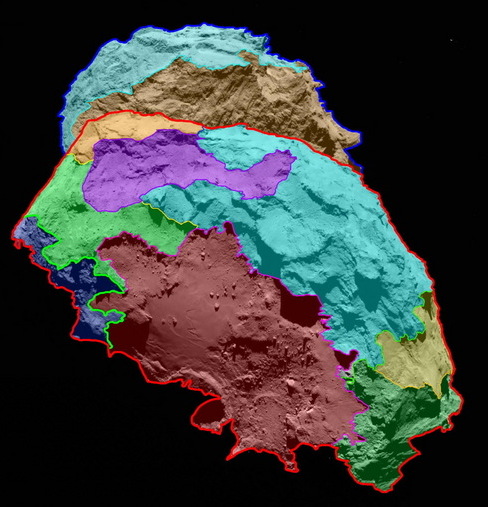Rosetta Probe targets first-ever comet landing 4 billion miles from Earth
The European Space Agency (ESA) released a colourful map on Monday that shows the different regions of the 2.5-mile-long (4 kilometre) ice comet known as 67P where they hope to land space probe Rosetta. The map will help scientists pick out the best landing spot for Philae, a small robot onboard Rosetta, which is set to touch down on the comet on November 11. The final landing site and a backup will be announced later today.
This first map is, of course, only the beginning of our work. At this point, nobody truly understands how the surface variations we are currently witnessing came to be.
Dr Holger Sierks of the ESA
Rosetta left Earth in 2004 and has travelled 4 billion miles (6 billion km) to reach Comet 67P/Churyumov-Gerasimenko. NASA’s Deep Impact spacecraft intentionally crashed a small probe into a comet in 2005 but Philae’s touchdown will mark the first ever soft-landing on a comet. Dr Christopher Carr, a principal investigator on the Rosetta Plasma Consortium instruments, said: “No spacecraft has ever orbited an active comet before, so there’s a lot to learn about spacecraft and instrument operations but we’ve got a really robust mission carrying some of the best instrumentation possible, and I have to say that the operations teams at the European Space Agency are doing a great job - they are true professionals,”
Everything we’ve discovered at 67P/C-G so far says that we’ve chosen a fantastic comet to visit
Dr Christopher Carr, principal investigator on the Rosetta Plasma Consortium instruments.

Science rosetta